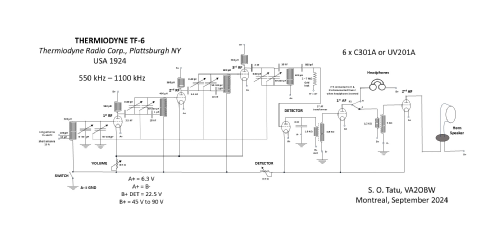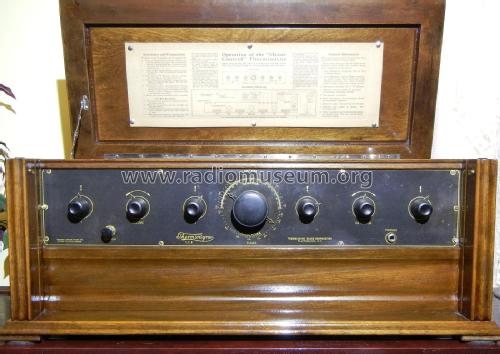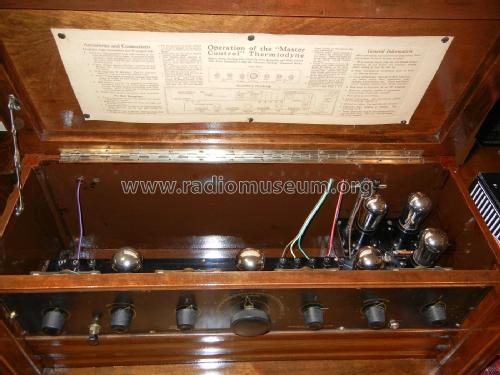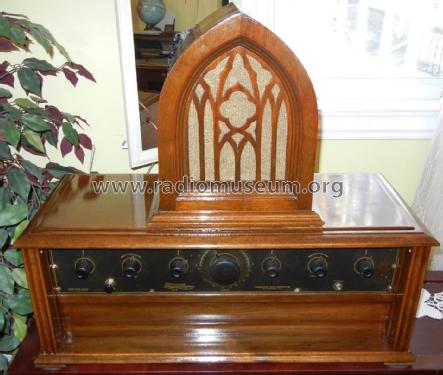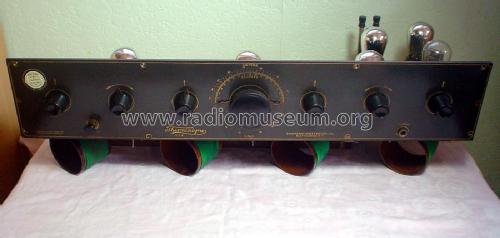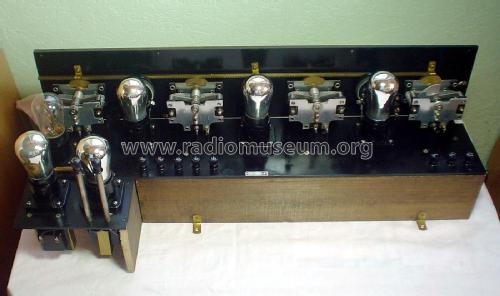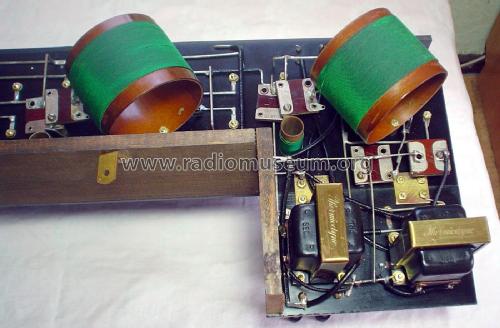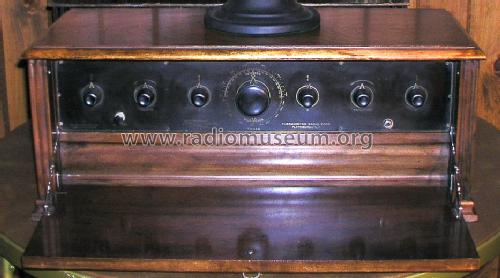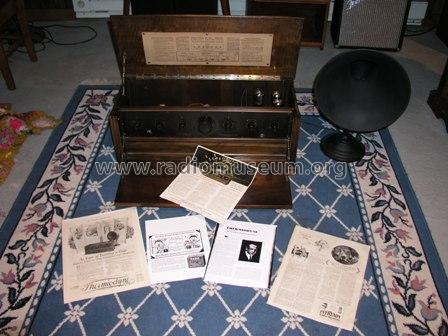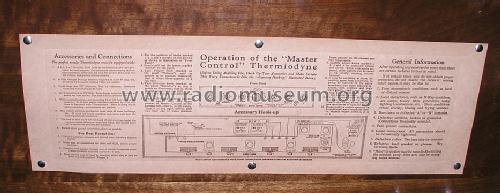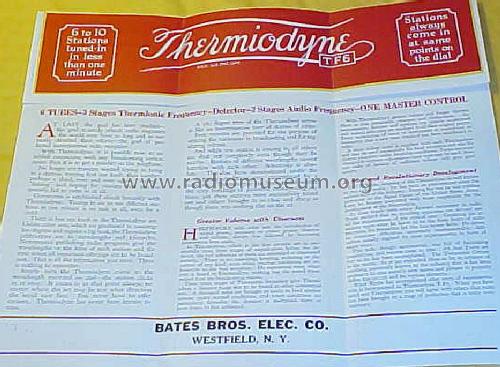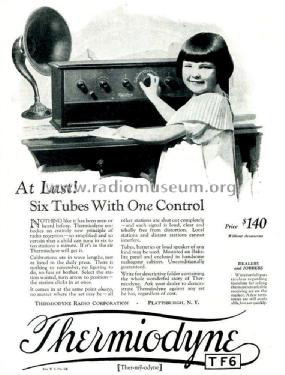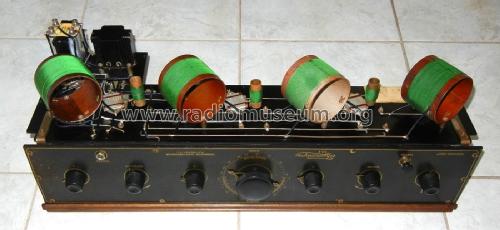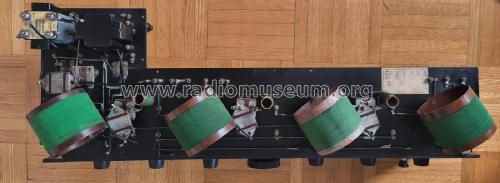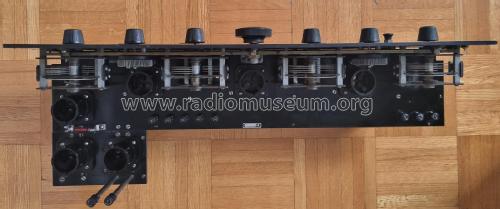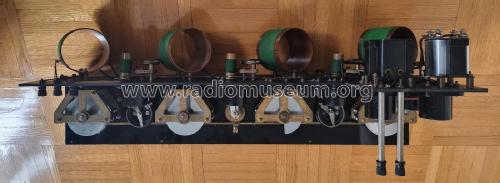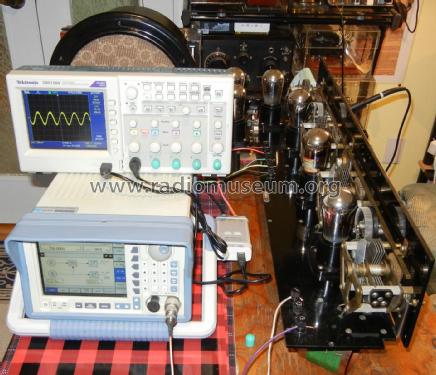TF6 Storage or Dry Batteries
Thermiodyne Radio Corp., Plattsburgh NY. (ex Capital Phonolier, Potter-Shepard) later Algonquin Electric Co.
- País
- Estados Unidos
- Fabricante / Marca
- Thermiodyne Radio Corp., Plattsburgh NY. (ex Capital Phonolier, Potter-Shepard) later Algonquin Electric Co.
- Año
- 1925
- Categoría
- Radio - o Sintonizador pasado WW2
- Radiomuseum.org ID
- 63321
Haga clic en la miniatura esquemática para solicitarlo como documento gratuito.
- Numero de valvulas
- 6
- Principio principal
- RFS sin reacción
- Gama de ondas
- OM (onda media) solamente
- Tensión de funcionamiento
- Baterías recargables o pilas / A: 6 V & B det: 22.5 V & B+: 45 V or 90 Volt
- Altavoz
- - Este modelo usa altavoz exterior (1 o más).
- Material
- Madera
- de Radiomuseum.org
- Modelo: TF6 [Storage or Dry Batteries] - Thermiodyne Radio Corp.,
- Forma
- Sobremesa apaisado (tamaño grande).
- Ancho, altura, profundidad
- 29.5 x 11.5 x 13 inch / 749 x 292 x 330 mm
- Anotaciones
-
One dial (primary tuning control knob)
Radio Collector's Guide 1921-1932 lists two TF6 models: one uses storage or dry batteries, TF6 [Storage or Dry Batteries] and the other uses storage batteries only, TF6 [Storage Batteries only].
See Professor Serioja Tatu's Test Bench Measurements of this radio here.
- Peso neto
- 40 lb 0 oz (40 lb) / 18.160 kg
- Precio durante el primer año
- 140.00 USD
- Ext. procedencia de los datos
- Ernst Erb
- Procedencia de los datos
- Radio Collector`s Guide 1921-1932
- Otros modelos
-
Donde encontrará 5 modelos, 3 con imágenes y 1 con esquemas.
Ir al listado general de Thermiodyne Radio Corp., Plattsburgh NY. (ex Capital Phonolier, Potter-Shepard) later Algonquin Electric Co.
Colecciones
El modelo es parte de las colecciones de los siguientes miembros.
Contribuciones en el Foro acerca de este modelo: Thermiodyne Radio: TF6
Hilos: 1 | Mensajes: 1
Test bench measurements:
- Measured frequency band: 540 kHz – 1114 kHz, perfectly aligned with the dial indications. This covers the 550 kHz -1100 kHz declared by the manufacturer, 100 years after its tuning in the factory. Tuning from a station to another is very easy using only the central main tuning. Minimum adjustments are required from the 4 capacitors in parallel with the main tuning.
- Receiver sensitivity is around - 60 dBm with a good signal to noise ratio, measured with Rohde & Schwarz SM300 signal generator connected at long antenna connector with a proper impedance adapter; signals at -70 dBm still detectable. Noise level is -75 dBm, compared to the best Atwater Kent model 20 receivers. The same sensitivity is observed over the entire BC band. At the minimum volume, the sensitivity is – 15 dBm, at the max around – 60 dBm.
- The AF signal has been captured at the speaker output (1 kHz tone demodulated, as measured). Litle distortions are observed, as seen in the test bench measurements picture. Detector rheostat is around 15 degrees right to the middle (1 o’clock) for the best detection (signal close as much as possible to a sinusoidal one).
- If the radio starts oscillating in AF (hundreds of Hz) a good idea is to move the external speaker away or to reduce the B+ voltage (for example from 90 V to 45V), to reduce the overall gain. This audio oscillations or humm can occur because of the high gain of the radio and of the mechanical vibrations of the tubes due to speaker.
- The measured DC current in A battery is between 1.1 A - 1.66 A (6 x 0.25A = 1.5 A) with both rheostats (volume and detector) at minimum and maximum values respectively. The measured voltage at the heater (cathode) is between 3.8 V and 6 V in the same conditions. Therefore, the radio must be tuned to operate at the minimum DC current, as close as possible to minimum volume to economise the A battery. Both rheostats can be turned OFF.
Alan Larsen, 02.Oct.24
